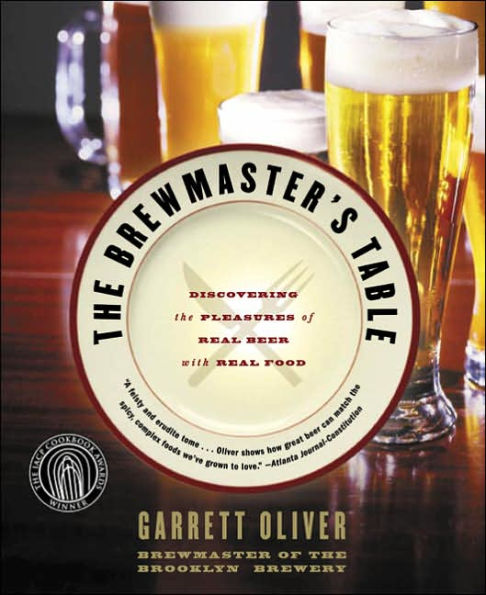Garrett Oliver, award-winning Brewmaster and Vice President of Production of the Brooklyn Brewery, recognized by Gourmet Magazine as a “passionate epicure and talented alchemist”, reveals the full spectrum of flavors contained in the more than 50 distinct styles of beer from around the world.
Most importantly, he shows how beer, which is far more versatile than wine, intensifies flavors when it’s appropriately paired with foods to create a dining experience most people have never imagined. Garrett, along with photographer Denton Tillman, traveled throughout Europe visiting fellow brewmasters to trace the beers of the world to their sources. Back in the States, he met with the star chefs he has advised about beer. The resulting book is a motherload of information, lushly illustrated with Tillman’s gorgeous photographs of the world’s best beers and the breweries that produce them. Above all, THE BREWMASTER’S TABLE is a new way of thinking about beer – one that will bring this under-appreciated brew to the status it deserves.
Whether it’s a Belgian wheat beer with a simple salad, a Brooklyn Pilsner to wash down spicy tacos, a pale ale alongside a porcini risotto with foie gras, or even a Framboise to accompany a dark chocolate brownie, beer is the perfect complement to any dining experience, at home in front of the TV or in a four-star restaurant.
He explains how beer is made, shows you its fascinating history, and then leads you through the amazing range of flavors displayed by the dozens of distinct styles of beer from around the world. Finally, he suggests beer pairings that will please your tastebuds and blow your mind. Whether you’re a beer aficionado, a passionate cook, or just someone who loves a great dinner, this book will indeed be a revelation.
Garrett Oliver, award-winning Brewmaster and Vice President of Production of the Brooklyn Brewery, recognized by Gourmet Magazine as a “passionate epicure and talented alchemist”, reveals the full spectrum of flavors contained in the more than 50 distinct styles of beer from around the world.
Most importantly, he shows how beer, which is far more versatile than wine, intensifies flavors when it’s appropriately paired with foods to create a dining experience most people have never imagined. Garrett, along with photographer Denton Tillman, traveled throughout Europe visiting fellow brewmasters to trace the beers of the world to their sources. Back in the States, he met with the star chefs he has advised about beer. The resulting book is a motherload of information, lushly illustrated with Tillman’s gorgeous photographs of the world’s best beers and the breweries that produce them. Above all, THE BREWMASTER’S TABLE is a new way of thinking about beer – one that will bring this under-appreciated brew to the status it deserves.
Whether it’s a Belgian wheat beer with a simple salad, a Brooklyn Pilsner to wash down spicy tacos, a pale ale alongside a porcini risotto with foie gras, or even a Framboise to accompany a dark chocolate brownie, beer is the perfect complement to any dining experience, at home in front of the TV or in a four-star restaurant.
He explains how beer is made, shows you its fascinating history, and then leads you through the amazing range of flavors displayed by the dozens of distinct styles of beer from around the world. Finally, he suggests beer pairings that will please your tastebuds and blow your mind. Whether you’re a beer aficionado, a passionate cook, or just someone who loves a great dinner, this book will indeed be a revelation.

The Brewmaster's Table: Discovering the Pleasures of Real Beer with Real Food
384
The Brewmaster's Table: Discovering the Pleasures of Real Beer with Real Food
384Paperback(Reprint)

Product Details
| ISBN-13: | 9780060005719 |
|---|---|
| Publisher: | HarperCollins |
| Publication date: | 05/03/2005 |
| Edition description: | Reprint |
| Pages: | 384 |
| Product dimensions: | 9.02(w) x 7.40(h) x 1.35(d) |
